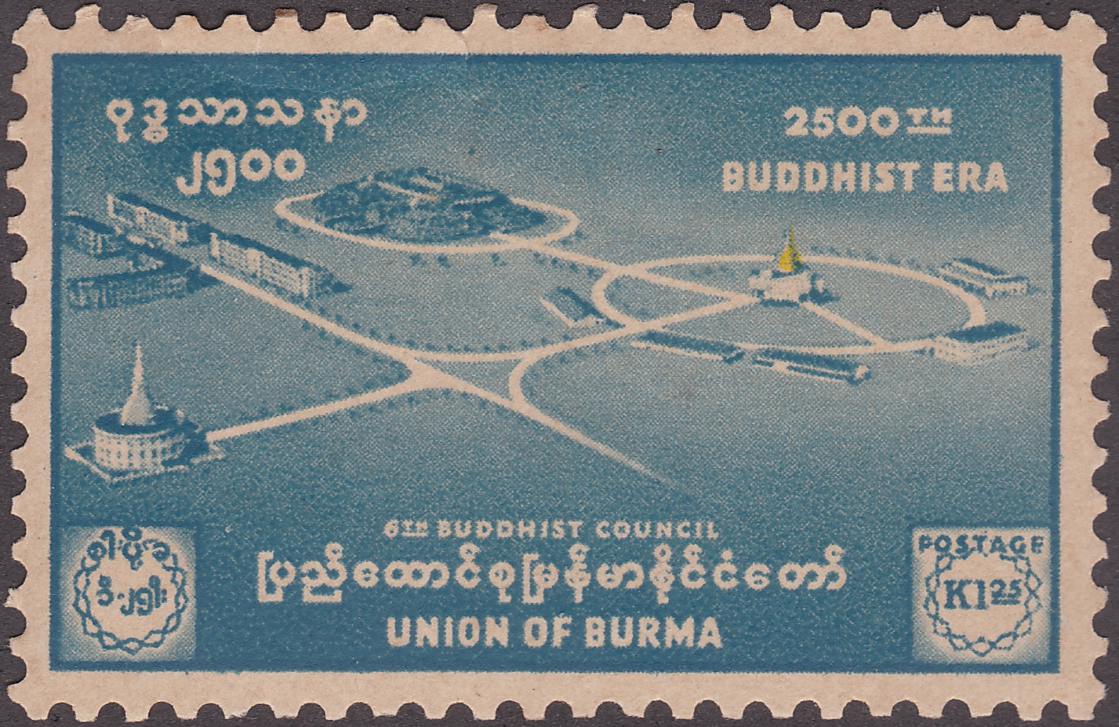WORLD BUDDHIST STAMPS e.GALLERY
bringing the buddhist world at the comfort of your home
| Aerial view of 6th Buddhist Council, Yangon | |
The Sixth Council was called at Kaba Aye in Yangon (formerly Rangoon) in 1954, 83 years after the fifth one was held in Mandalay. It was sponsored by the Burmese Government led by the then Prime Minister, the Honourable U Nu. He authorized the construction of the Maha Passana Guha, the "great cave", an artificial cave very much like India's Sattapanni Cave where the first Buddhist Council had been held. Upon its completion The Council met on 17 May 1954.
As in the case of the preceding councils, its first objective was to affirm and preserve the genuine Dhamma and Vinaya. However it was unique insofar as the monks who took part in it came from eight countries. These two thousand five hundred learned Theravada monks came from Myanmar, Thailand, Cambodia, Laos, Vietnam, Sri Lanka, India, and Nepal. Germany can only be counted as the nationality of the only two western monks in attendance: Venerable Nyanatiloka Mahathera and Venerable Nyanaponika Thera. They both were invited from Sri Lanka. The late Venerable Mahasi Sayadaw was appointed the noble task of asking the required questions about the Dhamma of the Venerable Bhadanta Vicittasarabhivamsa who answered all of them learnedly and satisfactorily. By the time this council met all the participating countries had had the Pali Tripiṭaka rendered into their native scripts, with the exception of India.
The traditional recitation of the Buddhist Scriptures took two years and the Tripiṭaka and its allied literature in all the scripts were painstakingly examined and their differences noted down and the necessary corrections made and all the versions were then collated. It was found that there was not much difference in the content of any of the texts. Finally, after the Council had officially approved them, all of the books of the Tipitaka and their commentaries were prepared for printing on modern presses and published in the Burmese script. This notable achievement was made possible through the dedicated efforts of the two thousand five hundred monks and numerous lay people. Their work came to an end on the evening of Vesak, 24 May 1956, exactly two and a half millennia after Buddha's Parinibbana, according to the traditional Theravada dating.
|
|
| Issued Country | Myanmar |
| Issued Year | 1956 |
| Category | Buddhist Architect Events |
| Type | Postage Stamps |
